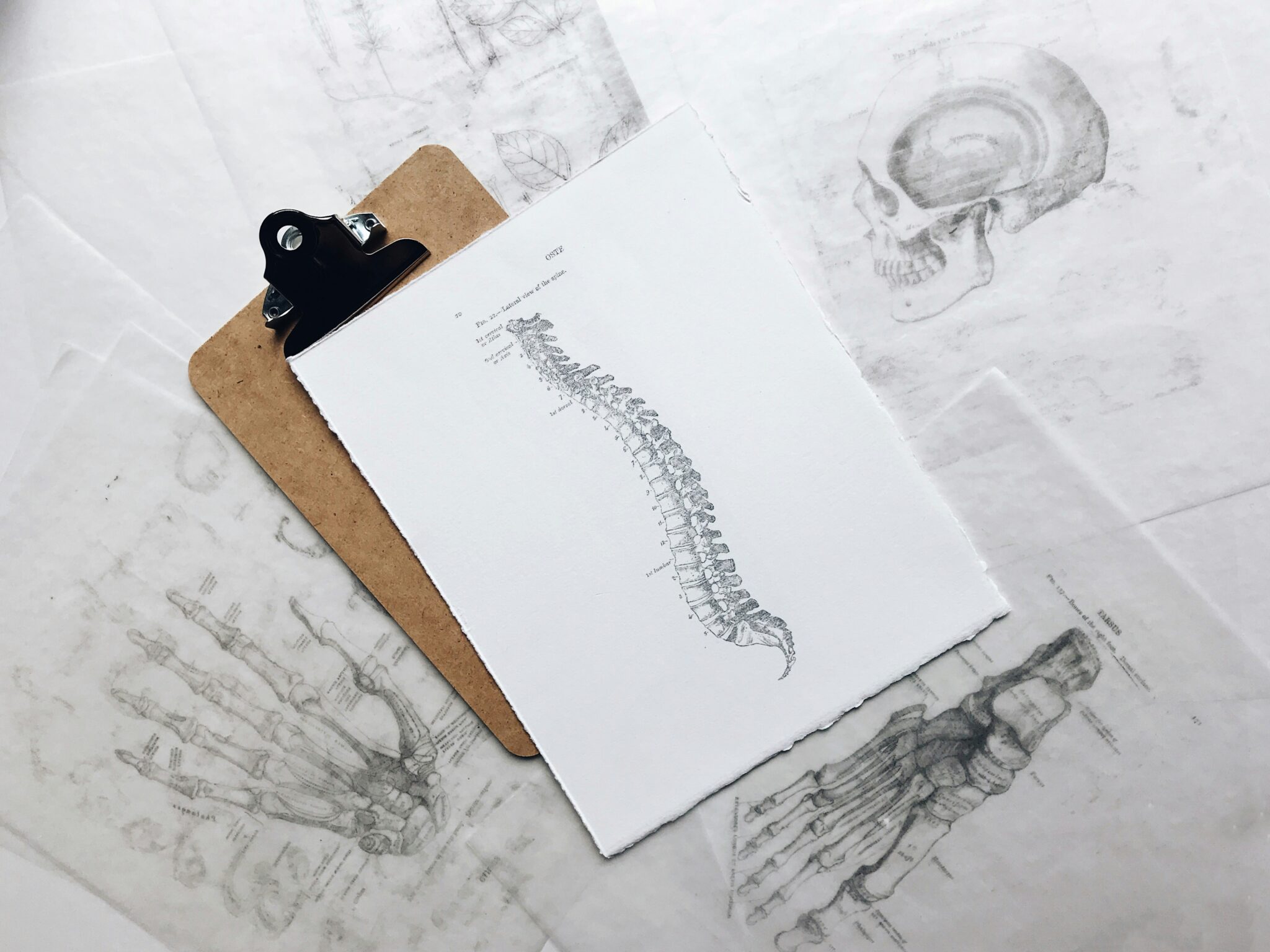If you’re looking for a way to up your gym game and take your workouts to the next level, then powerbuilding is definitely something worth taking into consideration.
Combining the explosive strength from powerlifting with the aesthetic muscle development of bodybuilding can create an unbeatable workout regimen that will leave you feeling stronger and more ripped than ever before.
In this e-book, we’ll dive into the topic of powerbuilding and discuss how to combine both approaches for maximum results.
On here, what you’ll learn includes, but is not limited to:
1. Bodybuilding basics
2. Powerlifting basics
3. How combining both can be beneficial
4. Rep ranges for powerbuilding
5. Rest times for powerbuilding
6. Training frequency for powerbuilding
Last but not least, we’ll give you a sample powerbuilding program, that you can modify to your fitness level and get you kickstarted.
Now… let’s dive in and explore everything there is to know about POWERBUILDING!
What Is Powerlifting?
Powerlifting is a strength training sport meant to increase the amount of weight you can lift in three main lifts: the squat, the deadlift, and the bench press.
Depending on what your prior experience is, rep ranges can vary from one to six repetitions.
By doing lower reps with heavier weights, powerlifters bring about adaptations that go beyond the growth of the muscles.
Due to the strenuous nature of powerlifting, the strength gains are a result of not just muscle growth but also adaptations in the central nervous system.
It’s important for those who powerlift to create a personalized program tailored to their individual needs and goals.
Powerlifting is an incredibly rewarding sport and an excellent way for those interested in increasing their overall strength and muscularity to achieve these goals.
Nevertheless, it does come with its downsides, such as the increased risk of injury.
What Is Bodybuilding?
Bodybuilding is a type of strength training intended to increase muscle mass and improve overall physical appearance.
While many people associate bodybuilding with intense weightlifting, the reality is much more nuanced.
There are multiple rep ranges associated with bodybuilding, from sets of five reps targeting quick bursts of power to higher-rep ranges that target muscular endurance as well as aesthetics.
All in all, the goal of bodybuilders is to create the biggest quality training volume possible – that is, as many difficult sets, taken close to failure, as possible, with as many reps as possible.
Broadly speaking, bodybuilders tend to cruise in the 6-15 rep range and within 2-3 reps shy of failure.
Ultimately, bodybuilding is about maximizing one’s physical potential through the effective use of strength training and nutrition – achieving more than just an improved physique but also greater self-confidence and satisfaction.
The Magic Of Powerbuilding
Powerbuilding takes both powerlifting and bodybuilding principles and combines them into one fitness routine.
This powerful approach has numerous benefits for individuals wanting to stay in shape.
For example, increased strength and muscular hypertrophy are often the primary goals of any fitness program, but powerbuilding can offer an all-in-one solution.
Powerbuilders also enjoy functional training methods which can help improve other lesser-known physical qualities, such as agility and dexterity.
Furthermore, it allows lifters to customize their workout routines by selecting different exercises depending on their specific goals and abilities.
While the combination of workouts may take more time than a traditional powerlifting routine or dedicated bodybuilding workout, its advantages make it a great way to stay fit, strong, and healthy.
Let’s have a look at the main benefits of a powerbuilding training regimen, shall we?
Increased Strength
Many gym-goers tend to focus on getting a big ‘pump’ in their workouts, and often this means performing sets of 8-12 repetitions.
While this range has its place in exercising, when it comes to developing maximum strength, the lower rep range of 1-5 reps is more appropriate.
As you learned, this style of training is referred to as powerlifting, and mainly focuses on the squat, bench, and deadlift.
With powerbuilding, you are essentially incorporating powerlifting methods while often diversifying with the pump-worthy bodybuilding rep ranges.
And well, this is one of the biggest perks of powerbuilding – its ability to create a stimulus for maximum strength gains.
Increased Mass
Now, the first benefit we just discussed (increased strength) has multiple implications.
You see, it’s not just the benefit of being able to lift an enormous weight.
This ability of yours then leads up to the ability to create a greater total working load in each and every workout.
And as you probably know, progressive overload is of the essence in the context of gaining muscle mass and strength.
This is why powerbuilding is so effective – it gives you a rock-solid fundament for both strength and muscle mass.
Easily Modifiable
Last but not least, one of the biggest benefits is that powerbuilding training routines are easy to modify based on individual needs and preferences.
This allows the lifter to craft a workout plan that maximizes their results while avoiding any potential injuries or adverse effects.
It also lets the lifter break through plateaus and adjust as soon as improvements stop showing.
As an added bonus, this kind of tailored program can be customized for a range of experience levels, from novice to advanced athletes.
Ultimately, having a modifiable powerbuilding routine makes it easier for everyone to get the most out of their workouts.
How To Powerbuild
Alright, well, so far, so good – we learned about the key differences between powerlifting and bodybuilding, and we established a solid foundation of benefits.
The truth is this – if you don’t have any specific competitive goals in mind but are looking to maximize the potential of your physique in terms of strength and muscle size, well, powerbuilding is your go-to option.
Now, without further ado, let’s have a look at the basics of powerbuilding, and discuss rep ranges, number of sets, rest times, and training frequency.
Rep Ranges
The rep ranges utilized in powerbuilding vary – while there are low-rep strength sets using 1-5 repetitions, mid to high-rep “hypertrophy” sets involving 6-15 repetitions are also included to maximize their benefits.
By combining the two styles, powerbuilders reap the strength endurance effects seen with higher reps while balancing that out with the structural stability, neural efficiency, and maximal force output associated with lower reps.
This type of approach encourages progressive overload and helps to maximize your body’s potential in multiple aspects.
Number Of Sets
Powerbuilding routines vary significantly depending on the goals of the individual.
However, there is one key concept that can’t be overlooked: progressive overload.
Doing more over time is absolutely essential in power building, with increasing the number of sets being one way to achieve it.
This can be done in a variety of ways: for instance, by adding an extra set to the end of each exercise.
Whatever you do, though, when it comes to the number of sets, start with a doable (but challenging) amount.
If you’re a beginner, start off with 5 sets per muscle group per week, and work your way up to 10-15 sets as you advance.
Rest Times
Rest times between sets are a critical component of any successful training program, including a powerbuilding one.
Not only does rest provide physical and psychological relief from strenuous sets, but it is also a crucial factor in your performance and ability to complete sets with proper form and at the right intensity.
To achieve the maximum benefit, you should aim to rest between 2 and 3 minutes between each hard set.
Doing so will help you delay fatigue and maintain peak performance.
Although everyone is different, typically, athletes should stick within the suggested rest time window or risk decreased performance or potential injury.
So, again, as the goal of a powerbuilding regimen is to maximize the quality volume rest times are crucial – shoot for 2-3 minutes of rest, in-between working sets.
Training Frequency
An important concept to understand when engaging in powerbuilding is the importance of training frequency.
Specifically, training each muscle group at least twice a week is recommended for maximum benefit.
This ensures that you can divide your total training volume into two separate sessions rather than trying to do all of your work in a single session – by breaking it up, you can get more out of each set while avoiding fatigue and improving muscular recovery.
In addition, increased training frequency allows you to make smaller jumps between sets so that you are better able to track progressions as you reach new levels in your strength and physique goals.
To Summarize
In essence, powerbuilding combines powerlifting and bodybuilding rep ranges, meaning that you will be utilizing the 1-5 rep range but also the 6-15+ rep range.
As in any traditional lifting routine, progressive overload is key – what this means for you is that throughout your journey, you will be increasing the number of sets and repetitions across your workout.
Last but not least, it is recommended that you split your total training volume into two separate workouts – doing 10 sets total in 2 workouts is better than doing them in a single workout.
Oh, and… Don’t forget your rest times between sets – set them to at least 2 minutes!
Sample Powerbuilding Program
As you learned, powerbuilding is an exciting and powerful way to combine elements of powerlifting and bodybuilding for the most effective workout routine.
As a result, a powerbuilding training program can be beneficial for advanced lifters looking to challenge and push their limits, but also for a beginner.
A sample powerbuilding program will typically feature split workouts and compound exercises emphasizing high-intensity workouts, along with sets and reps designed to optimize muscular hypertrophy.
With careful programming and execution, this type of workout can yield impressive gains in both muscle mass, strength, and physique.
Ultimately, no matter what your goals are as a lifter, powerbuilding offers an intense and comprehensive approach to total fitness.
And hey, if you want to try it,take the sample powerbuilding routine in the table below, and go crush it!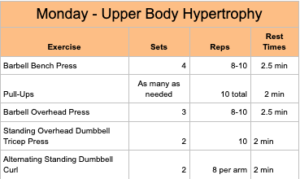
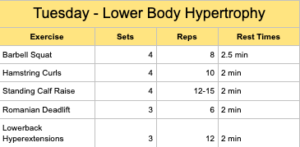
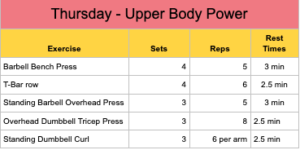
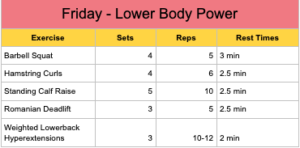
Important Considerations
Now let’s talk about some things to consider before taking on this training protocol.
Because each individual is generally best off with a personalized training plan, this specific one may not be the best one for most of you reading this, due to the fact we are shooting in the dark with the number of sets.
But as we mentioned, the plan is easily modifiable, meaning that if you’re having a hard time with this training regimen, you can easily switch some numbers up.
Your legs are toasted after the 2nd set of squats? Take some weights off and reduce the number of sets down to 3.
4 sets of hamstring curls is okay, but your performance drops from set to set? Increase the rest time to 3 minutes.
You get the point – look at the number of sets, reps, and the duration of the rest times, and make changes where needed.
Secondly, it is crucial to remember that two of the sessions (hypertrophy) are supposed to be done with generally lighter (but still challenging) weights, while power sessions are done with higher weights and lower reps.
That’s the beauty of it!
Conclusions:
All in all, powerlifting and bodybuilding can feel like two sides of a coin.
However, when combined as powerbuilding, they become a powerful combination to generate strength, muscle gains, and overall performance improvements.
If you’re willing to take the time to explore both worlds and break out of your comfort zone a little bit, then you will reap the rewards – not only during your training sessions but also in terms of reaching superior body composition and peak physical performance.
For those wanting to become the best version of themselves yet on the gym floor and beyond, powerbuilding is most certainly worth considering.
So what are you waiting for?
Let’s lift.


